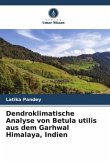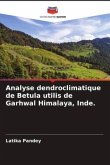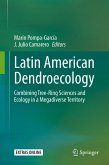Climate change has become a major global concern because of abrupt global temperature rise and occurrence of increasing frequency of extreme climatic events. Recently in the Himalayan region, devastating flood events, result of multiday cloudburst, occurred in June, 2013 in Kedarnath area of Uttarakhand, India. Betula utilis, a tree line species, tree core samples collected from two ( Bhojbasa and Chirbasa) sites in Bhagirathy Valley near Gangotri glacier and one (Rambara) site, Kedarnath temple area, near Chorabari glacier, Uttarakhand, western himalaya were analyzed to understand the tree growth climate response of the species growing in different locations and suitability for developing regional, scale climate records. Correlation among site chronologies and climate revealed different tree growth-climate relationships among all the studied sites. Comparison among residual ring- width chronologies of all the sites showed considerable match whereas good similarity noticed between Bhojbasa and Chirbasa ring-width chronologies. Differential tree-growth climate response noticed here is difficult to explain at this stage.
Bitte wählen Sie Ihr Anliegen aus.
Rechnungen
Retourenschein anfordern
Bestellstatus
Storno








